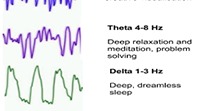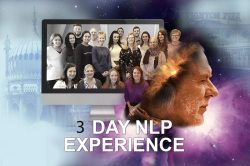I get often get asked this question when I’m running my NLP and Hypnosis trainings around the world. The simple and most ‘chunked up’ answer is that they are the same, but have differences. In fact, some of the NLP you see and hear has come from modelling hypnosis techniques and then having the desire to find out how to get similar results with clients, yet with eyes open.
On my NLP Trainings, I show my delegates the similarities of NLP and Hypnosis. The fundamental building blocks of NLP, the very fabric it relies on, are exactly the same foundations for Hypnosis. Rapport, sensory awareness and the conscious use of language. Have a look and listen below to the practitioners opening their eyes to this:
Some of the differences of NLP are that it mostly takes place with eyes open and no relaxing induction to begin with. No ‘formal’ induction that is. The element of rapport, plus using conscious language should induce relaxation and trust in the client. Also, with NLP, most of the techniques are very specific. As a practitioner, you’ll be trained to open up what I call “The Control Panel” and access wiring to change things on a neurological level. The practitioners will contact the unconscious mind via the pictures, sounds and feelings that make up the electrical circuits internally. Much akin to having a mental scalpel.
Alpha and Theta States

In Hypnosis, the client will experience several relaxing techniques, or inductions, to take them into Alpha or Theta states. When the client is in the appropriate state, the practitioners will be using mainly quite abstract language, guiding the client to their own ‘learnings’ and ‘integrations’. The conscious use of language will maintain the trance state and encourage the work to be undertaken by the unconscious (or subconscious if you prefer that term) mind. The hypnotherapist still has to use very specific instructions, yet that can be achieved by the tone of voice and can still be a generalised instruction. Such as “let me know when you have all the resources, by nodding your head”. The word “resources” is very general, but the instruction will be clear to the unconscious mind.
In NLP you will be (mostly unless using the Milton Model or Quantum Linguistics), to gain access to the deeper mind. Then, having access to the ‘control panel’ that encodes the clients reality of what they like, dislike and believe, make the changes. In that way, with NLP, you can have a client reproduce the experience of a phobia in a way that allows the Practitioner to know exactly how the phobia is put together piece by piece (the exact strategy). This can all be done in NLP with the clients eyes open and them feeling fairly normal. But the practitioner will have direct access to the subconscious mind, therefore the client must, by default, be in a medium trance at least.
In hypnosis, my clients eyes may be closed and they will be aware of a different state of relaxation. I will be relaxing my client with words like “you may find your mind floating away like clouds on a windy day” or, even more abstractly “perhaps your unconscious mind can find the learnings, which will allow this issue to re-evaluate itself”. Either way, the client has to use the facility of the unconscious mind and the art of that, to make sense of the suggestions, coupled with a physical sensation of relaxation.
So what is the same?

In NLP, we use the Milton Model and also The Conscious use of Language to design whole worlds for clients to experience differences to the reality that isn’t working for them. We call that inductive language. With inductive language, we can say things like “….perhaps you can already know how to make changes, haven’t you?” And the client will make sense of that language pattern, with eyes open and wide awake.
Or we can introduce ourselves to a group with an informed ‘mind read’, like “You may be wondering what you are doing here today, and that’s a good thing….” Or a cause and effect pattern, “….because you are here, means this will be one of the most informative and moving days training of your whole life…” Note: The above language patterns must be announced with good tone and a belief of the speaker. When this kind of the conscious use of language is employed, the listener will have a hypnotic induction that they will not even be aware of. They will simply feel in rapport with the speaker.
Use of Metaphor in NLP and Hypnosis
In NLP, I use the beautiful method of metaphor. Metaphor is amazing as it directly talks to the subconscious mind. it works on the level of symbology, and that’s where the clients deeper mind communicates directly to the mind and body. In Hypnosis, it’s exactly the same. My delegates are trained to use metaphor as the unconscious suggestions to their clients.
So that’s where hypnosis and NLP meet and also where they can be separate. Either way, I use both in every session with clients, whether on a corporate training or in therapy sessions.





